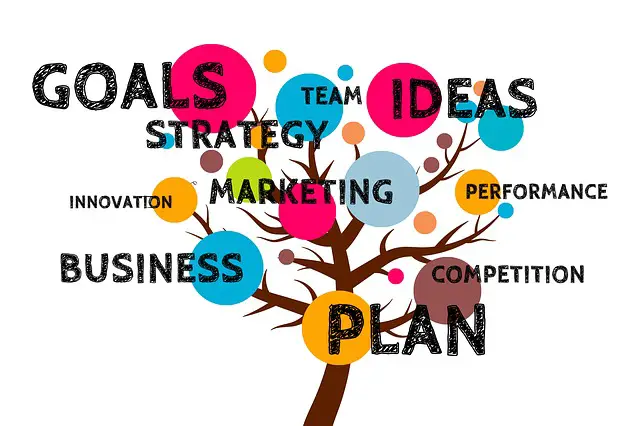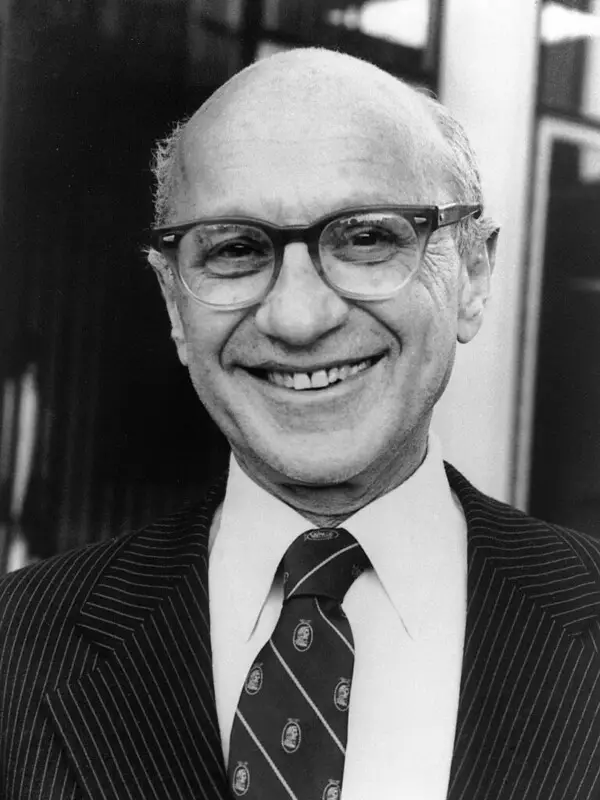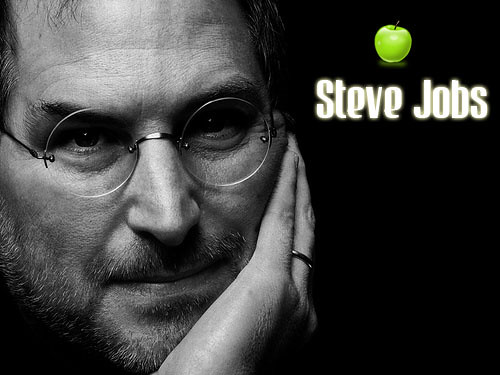When thinking of how well a business is thriving, the focus is given a lot to stock prices. A ceaseless parade of Wall Street analysts shows in the media saying to people when to purchase and when to sell. However, what this is basically about is the amount of money a shareholder can profit. For the companies that are involved, it does really a bit good for their health.
The power of a company isn’t determined only on the day’s stock price. If a CEO concentrates only on share price and making shareholders happy, she’s not working in her firm’s advantage. Leaders must fix their eyes on the future and achieving bigger plans. They have to be innovating and creating goods that people need, not only attempting to sell things they think they can sell.
These book chapters have an idea for putting businesses back into long-term thinking, assisting them to create resilient teams that can tolerate the goods and bad of the marketplace.
Try Audible and Get Two Free Audiobooks

Chapter 1 – The business industry is not a finite game; hence, business leaders have to embrace an infinite mentality.
There are several rules to stick with during sports. Part of the most significant rules is that everybody playing the game decides on when it begins and ends, how to get a point, and that the key factor on who wins is who has the highest points at the completion of the game. This is what’s called the finite game.
Different from what a lot of people consider, business is not a finite game. There are no beginning and end times that every player decided upon. Although there are specific legal guidelines that every business is told to abide by, it is left to the player to decide what to do with those rules.
As a matter of fact, the business world is an Infinite Game. There’s no determined period of time and no fixed- method of keeping score. Because there is no chance of winning, the aim of an Infinite Game is to remain in the game for as long as possible.
This may seem profane; however, both profit and income are not the only indications of business success. As a matter of fact, it can be really harmful to view income and profits as being the only indication of success. Nevertheless, the present’s high profits will signify nothing if you’re not very strong to survive tomorrow’s difficulties. This is the reason why business leaders have to reason in terms of an Infinite Game. They need to create something that’s not made to “win” but instead remain for future generations.

When the motive of your business plan is on short-term goals, such as acquiring the greatest likely incomes for the next quarterly report, you’re likely to have a type of tunnel vision that disregards what’s truly essential, such as being innovative and producing the best product or service that people need. These things are really essential than having the best market share or having the greatest money to your shareholders.
Think of Microsoft’s original guiding principle: As it was said by Bill Gates, he wanted his business to “empower everybody and all the business in the world to get more.” This certainly fits under the infinite mindset. But, during the early 2000s, under the finite-minded leadership of former CEO Steve Ballmer, Microsoft was concentrated on defeating Apple and winning more market share – to the loss of its status.
Microsoft pursed Apple with gadgets like the Zune, for instance, which was intended to compete in the marketplace made by the iPod. Due to that, the company was less recognized for its innovative and empowering goods, whereas Apple became recognized for making completely new markets.
Chapter 2 – There are five essential practices for playing the Infinite Game, having an inspirational just cause is the first one.
Victorious is a good player in the Infinite Game, the business that creates the Swiss Army knife. Over a long time, the Swiss Army knife was a well-known tool used for different purposes. However, after the occurrences of 9/11, it was prohibited from airline carry-on luggage and sales fell.
Before 9/11, Swiss Army Knives led to 95% of sales at Victorinox; however, as CEO Carl Elsener described, any long-lasting business will face various ups and downs. Therefore, rather than thinking short-term, he states, “We reason in generations.”
Victorinox bravely changed into new markets like fragrances, travel gear, and watches. It’s now a stronger company than it used to be, with Swiss Army knives bringing about just 35% of its income.
As it was stated by the author, there are five main practices that constitute the infinite mindset. They are:
Develop a Just Cause. Create Trusting Teams. Study your Worthy Rivals. Prepare for Existential Flexibility. And Lastly: Show the Courage to Lead.
Let’s begin at the start with maybe the most essential practice, developing a Just Cause. As Bill Gates’s initial vision for Microsoft, a Just Cause is inspirational as it seems toward a better future and allows your workers to understand what they’re working to achieve.
Also, a good Just Cause is wide-ranging, bold and idealistic, and representative of the value your business intends to offer. Another essential feature is for it to be strong and able to survive future transformation.

What a Just Cause is not is a moon shot. A lot of companies provide mission proclamations that basically target to be the leading or best at something. This can cause some type of tunnel-vision that the GPS device company Garmin was affected by.
Garmin’s mission states, “We will be the worldwide leader in all markets we serve and our goods will be chosen because of their fascinating design, top quality, and best value.” This is the type of usual, generic statement that a lot of companies have. Its attention is inward, on turning into a top company, and any sign to customer benefit serves as an addition.
The consequence of putting the customer last can be viewed in their stable fall since 2007. During that period, a lot of smartphone apps started to provide GPS tracking; however, instead of producing their own smartphone app, Garmin stayed stubbornly concentrated on creating its own devices. Its value now is a third of its 2007 value.
Chapter 3 – The initial vision of capitalism is not the same and healthier than the version that appeared in the 1970s.
Are your clients or shareholders the most essential aspect of your business? This question seriously affects what we think as the guiding principles of capitalism. It’s something to remember when considering your Just Cause.
Back then, during the mid-eighteenth century, Adam Smith an economist wrote a landmark book titled The Wealth of Nations. In the book, Smith basically talked about groundwork for the following 200 years of capitalism. In his book, Smith lays the welfares of the consumer as being the primary one, while the welfares of the firm are secondary. As a matter of fact, he admitted the significance of this principle to be clear. Nevertheless, any type of business that doesn’t attempt to make the client happy isn’t going be around for long, right?
Smith’s belief of capitalism remained strong until the mid-twentieth century when Milton Friedman, the Nobel Prize-winning economist came along. Friedman moved the attention away from the consumer to the shareholder. In a very -influential 1970 article, he stated that the primary duty of any kind of free-market enterprise is to gain money and this money is for the owners or the shareholders of the business.
Certainly, this change from being consumer-minded to being profit and shareholder-minded is exactly what occurred, particularly during the 1980s and 90s. Due to that, business plans were more concentrated on the short-term incomes increases that could improve stock prices and make the shareholders happy as well. That is how Wall Street, not long life, stability or quality of service, turned out to be the important decider of how “successful” a business was.
Therefore, if companies could increase their profit on investment by reducing costs, refraining workers or decreasing the research and development budget, they would. As a matter of fact, since when Friedman said to the world that making money for the shareholder was the main duty, creating these cost-reduction means was indisputably considered by a lot of people as the actual thing to do.

But, there’s a cause to trust that perhaps Smith was the one with the correct idea the whole time. Capitalism has become extremely imbalanced over the past few decades, up to the point where the amount of Americans investing in the stock market is at a 20 year low. Whereas since 1978, CEOs have been becoming richer, involving a 950 percent earnings rise; however, the average worker has experienced just an eleven percent increase.
This type of development is not just unfortunate alone; however, it’s also absolutely risky. It’s the type of imbalance that causes terrible falls in the market.
Chapter 4 – A good leader will put the determination of their workers before incomes.
Milton Friedman’s shareholder-centric concepts on capitalism have become really recognized that confronting this idea can look virtually reckless. However, if you determine success by longevity, which is the way success within the Infinite Game of business ought to be determined; therefore you have to concentrate not on short-term earnings; however on the determination of the people who want to assist your business.
One of the key objectives of a strong, inspirational, forward-thinking Just Cause is to pull people into your vision for the future. But, human beings are really good at detecting false information; hence, together with respecting your customers, you also have to respect those workers who are part of the cause. It’s essential that they’ll remain too.
The good news is, respecting your workers is not just inexpensive; however, it can also be compensated with high levels of motivation, loyalty, and efficiency. All these can rapidly become extra revenue.
Definitely, indicators like profit, revenue, and stock price are easily monitored, while the determination of the people needs observing the levels of worker morale, how inspired they are, and how dedicated they are to the cause. These entire levels rely on the strength of the company’s Just Cause and the quality of leadership.
Let’s look at two separate companies: Apple and The Container Store.

At a time, Apple’s leadership chose to take the brave step of treating the workers of their retail outlets the same as they do their business workers. This signified providing them the same package of health care and retirement bonuses. The outcome was that Apple saw rates of work retainment rise to approximately 90%, while the retail industry average is about 20 -30%. As a result of that, the corporation could spend less money on employment and training and enjoy the extra advantage of having loyal and very motivated workers providing better service.
So, what of The Container Store, which sells organization and storage products? They were not protected when the 2008 recession occurred. They had to look for a means of reducing cost; however, but the company’s infinite-minded leaders choose to put their workers first and instead of firing anyone they offered a temporary but indefinite freeze on wages and 401 (k) matches.
Leadership was concerned about how they would react. They shouldn’t have. Eventually, the workers didn’t just understand the choice; however, they would also decide to look for more means to cut costs by paying for their own costs when traveling. Nevertheless, respecting the determination of the people is worth it.
Chapter 5 – Building a culture of trust will cause better business habits and more ethical behavior.
When the great dollar becomes the key center of a business, it does not just cause an uninspiring Just Cause, it causes distrust as well as even unethical business habits. Both of these can really cut business longevity.
In firms where workers sense a lack of trust, mishaps and poor efficiency are sure to occur. This is because of the simple cause that no one will feel comfortable enough to voice out when mistakes occur or when someone is not certain about what to do.
This was exactly the situation at the Ford Motor Company before 2006 when new CEO Alan Mulally was selected. He immediately learned that the former CEO had a practice of reprimanding and even sacking people who brought bad information to him. Naturally, Ford workers made it their practice to bring just good news during meetings.
Mulally was aware that things would simply get worse if he didn’t look for a means to change the culture of distrust around. Therefore, he began business plan meetings every week and inspired everyone to bring bad news to the meeting. Ultimately, one worker felt secure enough to do that and, much to the employee’s relief, Mulally celebrated the news with a round of applause. As he said, just because someone has a difficulty doesn’t mean they are the issue.
Holding constant meetings where people are inspired to share their worries is only one method to form what the author names Trusting Teams. It all begins with only one meeting room, or in the situation of the Shell Oil Company, one oil rig. At their first trust meeting, Shell workers were assembled together in circles to just discuss their lives.

While oil rigs are commonly believed of as masculine places where touchy-feely feelings are ignored, the meetings were a great success in creating relations and building trust. When they spread crossed the company, the total accident rate declined by 84%.
Eventually, a culture of trust needs that the firm’s values and conduct are aligned firstly with the people and not profit. Or else, a culture of unethical conduct can immediately take over.
That was the situation at the banking company known as Wells Fargo. Between the years 2011 and 2016, more than three million fake bank accounts were formed by workers all over the organization. An investigation revealed that CEO John Stumpf was aware of this habit as early as 2002. He’d assisted form such an untrustworthy, high-pressure sales culture that workers felt they would be at risk of being sacked if they didn’t choose such type of unethical habits.
Chapter 6 – Be inspired by Worthy Rivals, and take a courageous change definitely when the time is appropriate.
If you’re a fan of sports, you are certainly aware of the advantage of having a Worthy Rival. When you’re playing against a rival with greater abilities, you acknowledge how he drives you to increase your own skill level and learn new skills.
Although this healthy mindset is common in sports, it is also seen in infinite-minded businesses.
In 2006, when Alan Mulally became the CEO, the Ford Motor Company had used the last 15 years losing 25% market share. The recovery tactic Mulally was provided with consisted of rising sales promotions and reducing costs – a really finite-minded approach.
Mulally had no aim of pursuing market shares. Instead, he wanted senior management to begin driving cars manufactured by Toyota and Lexus. He wanted the managers to study these opponents, learn from them, and understand the reason why people choose these cars over a Ford.
Neither did Mulally want to put other car corporations out of business–particularly when the 2008 recession happened. At that point, Ford was in a stable financial spot and didn’t require government bailout money such as GM and Chrysler. However, he was aware that the sellers and suppliers Ford depended on could go out of business if big customers such as GM were to fall; therefore, Mulally approved the attempts to assist his competitors.
At times, learning from your opponents entails more than only taking some clues and tricks. At times, it entails doing an Existential Flex. This is basically a self-prescribed change of course or self-disruption, and it can be one of the hardest things for a finite-minded business to carry out.

In 1979, Apple’s Steve Jobs came across the new graphical user interface (GUI) technology Xerox had been working on, and it made him to instantly alter Apple’s ideas. GUI created the point and click mouse cursor and the “desktop” and the icons for desktop folders. It didn’t need a user to understand any of the computer languages to work on her device.
Apple’s Just Cause was to create computers as an empowering device for a lot of people as possible; therefore, it was clear to Jobs that Apple’s new computers should possess GUI. Thus, in spite of warnings that such kind of an extreme alteration, certainly, would “blow up” the company, Jobs was aware that it was the actual thing to do. Therefore, four years after, the first Macintosh was produced. It would be another four years later that before Microsoft’s similar Windows 2.0 interface was produced.
Chapter 7 – It requires courage and bold choices to pursue an infinite mindset.
As you may know, a good Just Cause should advance an aim that is more than any one person and is essentially about more than money. In this regard, a Just Cause can serve as assistance for a leader to do the things that are appropriate that advance the cause. But, it still requires Courage to Lead, and that is the last of the five practices of the Infinite Game.
Showing Courage to Lead is important since it demonstrates a commitment to the cause and hence lays an example for the remaining of the company to trail. However, for some leaders, this can be an abrupt problem.
One of the issues is that CEOs are mostly employed from within the organization from people who worked as Chief Operating Officer (COO) or Chief Financial Officer (CFO). In these positions, daily worriers are far more finite. A CFO constantly handles the figures on a balance sheet while a COO handles the day-to-day organizational difficulties. None of these positions prepares someone to handle the duties of a CEO.

What are the duties of a CEO? Maybe a better manner to view position is as the Chief Visionary Officer since the key duty has to be the guardian and the voice of the firm Just Cause. When you contemplate your duty in this manner, it can make sure that you as well as your decisions remain concentrated on the Infinite Game.
Let’s look at what these types of courageous decisions are like in action. Firstly, think of the choice CVS Caremark took in February 2014. The long-running drugstore and pharmacy chain decided to stop the selling of cigarettes, despite the fact that it was being expected that such kind of choice could cost the company nearly $2 billion in income.
But, the choice was totally in agreement with the company’s Just Cause, which is to assist people on their way to better health. Even though there was a one percent reduction in the stock price on the same day of the declaration; after a year and a half, the price had doubled to a record high.
As a matter of fact, stockholders got a 70% rise in its earnings per share over the following three years. After CVS stopped the selling of cigarettes, sales in nicotine gum and patches increased, and CVS had begun making business with new health-minded sellers, who had formerly evaded them.
When you show the Courage to Lead, you’re finishing the circle of the Infinite Game, which begins with a Just Cause, carries on through the creation of Trusting Teams and openness, to Worthy Rivals and Existential Flexing. The outcome is a long-lasting success.
The Infinite Game by Simon Sinek Book Review
The business works as an Infinite Game. There is no time limit or fixed-upon score that determines who wins or loses. The key aim is to continue playing for as long as possible. In order to do just that, businesses have to be more infinite-minded by abiding by five key practices: developing a strong Just Cause that will encourage people; promoting a culture of trust among your workers; learning from and being motivated by your rivals; and showing the courage to lead your company toward your Just Cause and doing the right in the long-term, not just the short-term.
Believe in your Just Cause and your partners.
If you aren’t completely devoted or don’t believe in your Just Cause you may require a better one. Does it improve a cause that is more than you? Does it motivate commitment to a life of service in attaining the future that your Just Cause aims for? This is what it requires to do for it to last.
Understand that you don’t have the entire solution. There is nobody that does it all by themselves. Look for partners who also trust and believe in your Just Cause and depend on them to assist you to make choices that develop the cause.
Try Audible and Get Two Free Audiobooks
Download Pdf
https://goodbooksummary.s3.us-east-2.amazonaws.com/The+Infinite+Game+by+Simon+Sinek+Book+Summary.pdf
